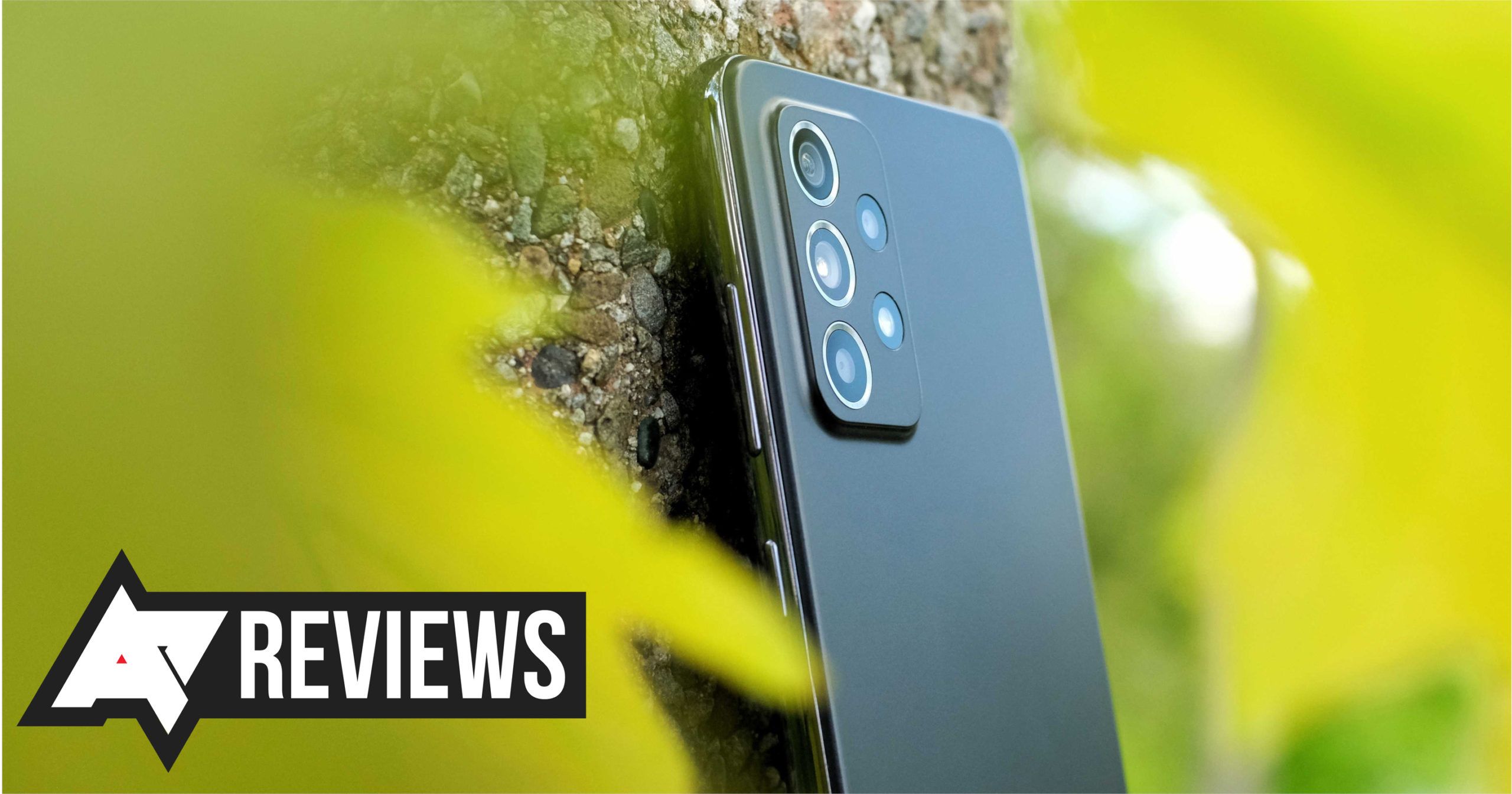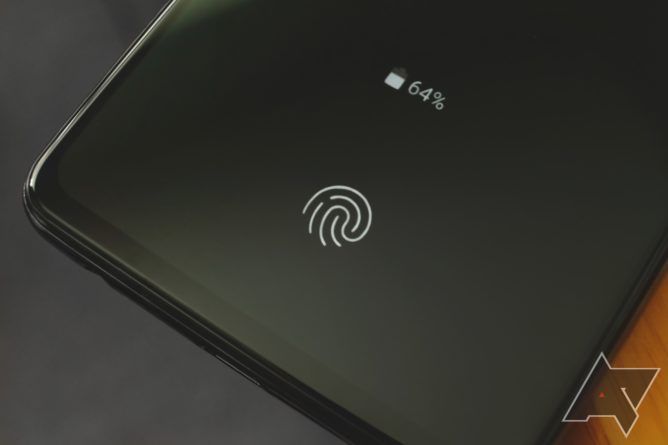Read update
- Long-term impressions
Samsung's A-series phones have become a known quantity: they're good, moderately priced devices, targeted at folks who might not care what processor their phone has or even know what RAM is. But as the delta between mid-range and flagship shrinks, less-expensive options like the Galaxy A52 are getting better and better — you don't have to give up nearly as much to save some money as you used to. The A52 is so solid, in fact, that I wouldn't mind using it full time — if it weren't for a couple sore spots, anyway.
SPECS
|
CPU |
Qualcomm Snapdragon 750G |
|
RAM |
6GB |
|
Storage |
128 GB, expandable by MicroSD (up to 1 TB) |
|
Display |
6.5" 1080p 120Hz OLED |
|
Rear cameras |
64 MP f/1.8 primary, 12 MP f/2.2 ultrawide, 5 MP f/2.4 macro, 5 MP f/2.4 depth |
|
Front camera |
32 MP f/2.2 |
|
Battery |
4,500mAh, 25W fast charging (wired only) |
|
Software |
Android 11, One UI 3.1 |
|
Biometrics |
In-display optical fingerprint scanner |
|
Headphone jack |
Yes |
|
Price |
$500 |
|
Buy |
THE GOOD
|
Display |
A high-quality 120Hz OLED panel is wild at this price point. |
|
Updates |
The A52 is good for three OS updates and four years of security patches, which is great for any 2021 Android device. |
|
Design |
Subjective, but I think this is a monumental improvement over the A51's dated looks. |
THE NOT SO GOOD
|
Cameras |
Samsung's $500 phones still take materially worse photos than Google or Apple's $400(ish) phones. |
|
Fingerprint sensor |
Not terrible, but not particularly quick, either. |
|
Haptics |
Mushy and unsatisfying. |
Design, hardware, what's in the box
The A52, as far as I'm concerned, is a revelation for Samsung's mid-range design. Last year's A51 was a good phone, but its iridescent pattern and glossy plastic coating really screamed budget. By contrast, the A52 is a sleek, monolithic slab of plastic with a nice eggshell finish. Internationally, it's available in a number of trendy pastels, but here in the US, we're stuck with black for now (Awesome Black, officially). It's a shame we miss out on the fun, but the black version has a sort of elegant, faux-high end vibe I don't mind at all — although it does show hand oil more than lighter colors would, which is a bummer.
The camera bump is molded out of the same piece of plastic as the back plate, a cool look that wouldn't be as possible if the phone were glass. Along the edges, the frame is coated in glossy, mirrored plastic. It looks fine, but as long as it's plastic, I'd have preferred it be the same finish as the back of the phone.
Around front, there's a 6.5-inch, 1080p OLED panel with a 120Hz refresh rate. Everything about it is better than I was hoping for. Colors and viewing angles are great, and 120Hz is entirely unexpected in a mainstream $500 phone. The under-display optical fingerprint reader, on the other hand, feels pretty budget. It's relatively accurate, but it takes just a bit too long to work to feel fluid.
Great screen, mediocre fingerprint scanner.
No surprises in the box: you get the phone, normal literature, a 15-watt power brick, and a USB-C-to-USB-A cable.
Software, performance, and battery life
The Galaxy A52 runs One UI 3.1 over Android 11, and I gotta say, I've grown to like Samsung's software. A lot of its apps still suck — ads and all — but hey, you don't have to use them if you don't want. The unavoidable bits like navigation and menus are easy to use and inoffensive to look at, even by my persnickety standards. Additional functionality like Edge panel menus, while not necessarily my thing, are there if you want them and easy to tuck away if you don't. Samsung's also committed to three OS version updates and four years of security patches for the A52, which is the best software support you'll get on just about any phone that wasn't made by Apple.
Performance is also more than adequate. Running on a (5G-capable) Snapdragon 750G chipset and six gigs of RAM, the A52 isn't aggressively fast the way a Snapdragon 888 phone is, but it's not frustrating to use, either. It'll handle any normal smartphone task you throw at it without complaining, just don't expect to smoothly edit a huge spreadsheet while also playing a taxing 3D game.
Battery life is solid, too. I never got terribly scientific with keeping an eye on lifespan, but with laid back use, I easily coasted the A52 well into a second day with the display set to 120Hz — if you dialed it back to 60, obviously, it'd last even longer. There's no wireless charging, but the 4,500 milliamp-hour cell can handle wired input up to 25 watts.
Cameras
The cameras on the A52 are in a tough spot. They're not bad, but I still can't help but feel at least a little dissatisfied.
Given enough light, photos from the primary sensor are fine — and they should be, given it's an optically stabilized 64-megapixel shooter. The flexibility of having a wide lens is something you really can't take for granted in this price range, either. But two of the four cameras are crud — five-megapixel depth and macro sensors — and all the sensors seem to struggle with exposure in less than ideal circumstances. I often ended up with shots that were significantly darker or lighter than I expected. Details can get a little funky if you crop in, too.
The macro camera, if you couldn't guess, isn't much worth using. In my experience, results typically aren't any better than cropping a shot from the primary sensor.
Macr-oh no. Please stop this, Samsung.
It almost feels unfair to compare other mid-range phones to the Pixel 4a when it comes to imaging prowess, but Google is really eating everybody's photo lunch in the sub-flagship space (the $500 4a 5G even has an ultrawide lens). I was hoping this phone, one that costs $150 more than the base model 4a, from the same company that made one of this year's best camera phones so far, would have just a little more to offer, but as it is, its cameras are just alright.
Should you buy it? Rating 7.5/10
Samsung Galaxy A52
Sure. The A52 is $100 more expensive than the A51 was at launch. For that hundred bucks, you're getting an overhauled design, a better processor, more RAM, faster display, and IP67 water resistance (the A51 didn't have any official rating). That's a lot of improvement.
In the grand A-series tradition, the A52 is another competent mid-range Samsung phone in a long line of competent mid-range Samsung phones. But I would've liked to see some tweaks to either hit a lower price or allocate more budget to the A52's weaker points — dropping the two useless camera modules and swapping out the 120Hz panel for a 90Hz one, for instance.
And at $500, the A52 has the Pixel 4a 5G to contend with. Compared to that phone, this one has worse cameras and a slower processor — but also a better display, expandable storage, a bigger battery, rated water resistance, and longer software support.
Unless you really want the better photos the 4a 5G takes, there isn't anything here that makes me hesitate to recommend the A52. Do you want a good, big device for about 500 bucks? This is that. Knock yourself out.
Buy it if:
- Display quality and long software support are at the top of your list.
- You just want a big, decent phone you won't need to think about again for several years.
Don't buy it if:
- You want top-tier photos. Consider the Pixel 4a 5G.
- You can save up longer. The S20 FE is constantly on sale, and the Galaxy S21 has been as cheap as $650
Where to buy the Galaxy A52:
UPDATE: 2021/08/06 9:39am PDT BY TAYLOR KERNS
Long-term impressions
Additional time with the Galaxy A52 has only served to reinforce my early thoughts: I really like this phone.
Build quality is great for an all-plastic device; it doesn’t flex or creak, and it’s got a nice heft to it. I’m also growing pretty attached to the stealthy matte black color, and while I’m envious of the fun pastels the rest of the world got, I’ll take this over any glossy finish, hands down.
The display, a 120Hz OLED, is outstanding for a mid-range phone, and the Snapdragon 750G in here is unequivocally good enough for what most people do with their phones on a daily basis. I just wish it had eight gigs of RAM — six feels stingy, and I imagine that deficiency will be very tangible by the time the A52 reaches the end of its software lifespan in mid-2025.
My original complaints still stand, too. Camera performance is just adequate for this price, and there are cheaper phones from rivals like Google that take photos in an entirely different league. And as much as I love the build quality here, the A52 falls flat on other quality-of-life points, like the slow fingerprint sensor and the absolutely atrocious haptics (I’ve switched off vibration everywhere I can).
On balance, this is still a really good mid-range device — and it’ll stay safe to use for three more years and change thanks to Samsung’s industry-leading update policy. At $500, it’s not as aggressively priced as last year’s $400 A51, but it’s also materially better than that phone was in a lot of ways. And hey, if it’s too pricey, there’s always the A42.


